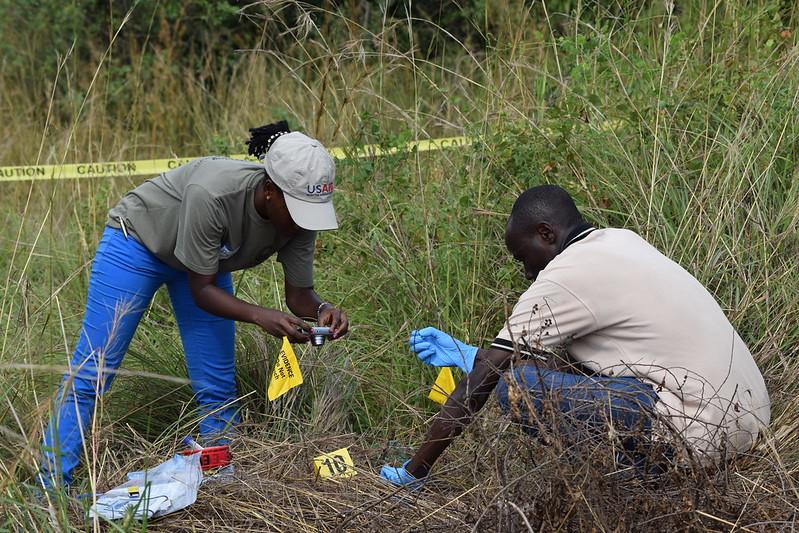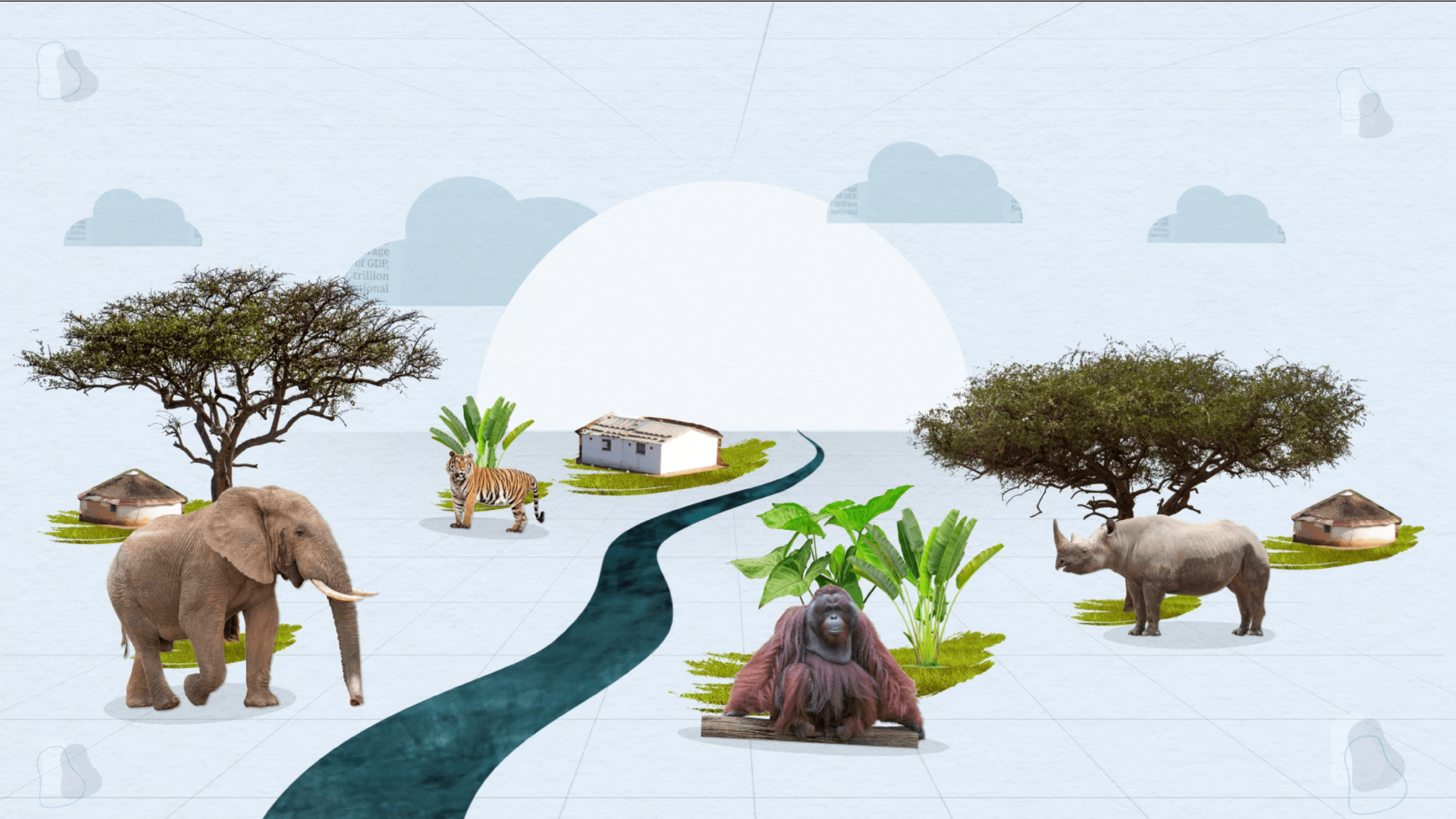Blog
Informality in Uganda’s illegal wildlife trade: The promise and perils of community engagement

Despite a robust legal and institutional apparatus for tackling illegal wildlife trade, including the 2019 Wildlife Act and Standards and the specialised Wildlife and Utilities Court, Ugandan efforts to address its role as an illegal wildlife ‘one-stop shop’ in East and Central Africa are undermined by corruption. A 2023 Afrobarometer survey found that citizens believe the level of corruption in Uganda to be increasing, and that they do not report corruption for fear of retaliation by authorities. Moreover, in a 2022 Transparency International report, two critical Ugandan institutions for tackling illegal wildlife trade, the police and the judiciary, were ranked highest on an index of the country’s perceptions of corruption.
Uganda Wildlife Authority’s Community Conservation Policy of 2019 places communities at the heart of efforts to tackle illegal wildlife crime, including the co-management of wildlife resources. In a field of practice often dominated by security-heavy strategies, here we consider the evidence supporting community-centred approaches to tackling the illegal wildlife trade, where these efforts face the added difficulty of corruption.
Informal networks
The nexus between corruption and informality is a fundamental aspect of the illegal wildlife trade infrastructure in Uganda. Wildlife crime occurs via informal networks that include wildlife sites and biodiversity hotspots. Two such hotspots are Queen Elizabeth Protected Area (hosting some 60% of Uganda’s elephants and large populations of buffalo and hippopotamus) and Murchison Falls Protected Area (including Uganda’s largest national park). These hotspots are crucial links in the illegal wildlife trade commodity chain because they connect neighbouring villages to the global market, and to hunters and related associations.
Informal networks bring poachers, intermediaries, traffickers, and buyers together. This enables the transportation of large volumes of wildlife products into and out of Uganda in a coordinated fashion. These networks and their transnational supply chains operate opportunistically but are also highly organised and adaptable to where they find least resistance. They are also governed by unwritten, hidden, and relational rules, under which the various players operate informally.
Transport
Actors in these informal networks consolidate and conceal wildlife products, transporting them on foot, or with small vehicles such as motorcycles, to the nearest border town. Typically, a middle-man receives small volumes of products from hunters or organised hunting squads, and the assorted products are then consolidated and transported on vehicles to Kampala.
In Kampala, packers adopt various techniques for concealing the products. In the case of ivory, these include: hiding ivory in agricultural products (potatoes, bananas, fish, grains, beans, tea, coffee, butter); mixing ivory with licit wildlife products (timber); hiding ivory in vehicles (fuel tankers or military trucks); or reconstituting ivory by carving or moulding it (into keychains, chopsticks, beads, or coffins).
Wildlife products must have export clearance if transported by air or ship. Traffickers use various means to beat the system, whether that is at Entebbe airport, the UN airport, or other exit ports in East and Central Africa. Products may be put on commercial aircraft, preferably smaller ones, scheduled to depart at night to reduce the probability of detection. The Mombasa seaport is another exit route. Products are loaded on a truck or train and transported to Nairobi or Mombasa by road. They are then loaded on ships at the Port of Mombasa.
Social contacts
Such illicit logistics require informal social contacts between traffickers on the one hand, and customs clearing agents and freight forwarders well-versed in international transportation on the other. The latter agents are knowledgeable, skillful, and capable of maintaining effective social relationships with security firms, border patrols, police officers, soldiers, and intelligence agents. With security officers primed not to ask questions, clearance agents take illegal wildlife products from traffickers’ stores, load them and clear them.
Trust binds those at the top of trafficking organisations, as illegal wildlife trade is a top-down, carefully planned operation. Further down the chain at the grassroots level, however, are accomplices or ‘foot soldiers’ with little training or equipment. Interactions among the centralised leadership and decentralised grassroots are based on informal social relations, keeping the entire network humming along.
Community engagement
Standing between the traffickers and law enforcers are the communities that live close to national parks and wildlife sanctuaries. Their livelihoods are directly or indirectly tied to these parks and sanctuaries. Their attitudes to wildlife, and to human–wildlife conflicts in particular, affect the practice of the illegal trade in wildlife. However, many initiatives to curb the trade, especially top-down militarised or heavy law-enforcement approaches, have tended to view communities as impediments to success rather than potential allies.
Community engagement involves recognising community rights, mitigating human–wildlife conflict, strengthening local livelihoods, providing community-level benefits, and including community members in ranger or scout programmes. Yet, despite examples of positive outcomes from such engagement, law enforcement continues to be policymakers’ preferred choice in addressing illegal wildlife trade.
Through a series of conferences held in London (2014), Kasane (2015), and Hanoi (2016), four main priorities for addressing illegal wildlife trade have emerged:
- Eradicate the market for illegal wildlife products.
- Build effective legal frameworks.
- Strengthen law enforcement.
- Support sustainable livelihoods and economic development.
While there has been acknowledgement of the usefulness of communities in pursuing these four priorities, analysis from the World Bank shows that community-focused projects get less funding than protected area management and law-enforcement approaches. Only 15% of the US$1.3 billion invested between 2010 and 2016 to reduce the illegal trade in wildlife was allocated to community-focused projects.
Even with this limited funding, there is evidence that co-management of wildlife resources by communities and governments can yield results. For instance, community engagement has improved the Uganda Wildlife Authority’s work in tackling the illegal wildlife trade: engagement with community members in Queen Elizabeth National Park in 2023 led to the arrest of poachers who had killed lions.
Alongside this growing evidence of community-led success, there is also increasing evidence that militarised law-enforcement approaches are unsustainable, expensive, and can alienate communities. So, could this lead to greater support for community engagement? And is this a desirable outcome?
Community engagement is not a magic bullet, but it offers a more ‘human’ approach
Community engagement is not one thing. Neither is it a magic bullet against illegal wildlife trade. Genuine engagement with communities takes time and is complex, due to varied social, economic, political, geographic, and cultural realities. It is impossible to create a ‘practical toolkit’ that can work in all situations and, for community engagement to succeed at all, strong monitoring frameworks must assess whether any approach is effective in the long run.
And while there is emerging evidence that community-driven enforcement can be effective and complementary to formal centralised approaches, especially where the state itself is weak, community-based institutions appear less effective in enforcing rules than public agencies.
Yet, where anti-illegal wildlife trade efforts face serious corruption challenges, as in Uganda, from informal networks and captured institutions, tackling the illegal trade purely via top-down, security-heavy approaches may not only be ineffective, but counterproductive too. Instead, those pursuing anti-illegal wildlife trade goals should deploy genuine community engagement alongside law enforcement efforts. Involving communities as allies can help ‘humanise’ the problem – as well as the actions being taken to address it.
Disclaimer
All views in this text are the author(s)’, and may differ from the U4 partner agencies’ policies.
This work is licenced under a Creative Commons Attribution-NonCommercial-NoDerivatives 4.0 International licence (CC BY-NC-ND 4.0)


